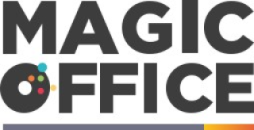
The Role of Paper Calendars in Modern Offices
The Enduring Relevance of Paper Calendars
In an increasingly digital age, it's easy to overlook the significance of paper calendars in the workplace. Yet, their presence continues to hold substantial value. Despite the allure of digital tools, traditional paper calendars and planners offer tangible benefits that digital options often cannot replicate. They serve as constant companions on desks and walls, providing quick views of year, month, and week, ensuring seamless organization of tasks and appointments.
Office staff often find that the tactile interaction with a paper planner aids memory retention and goal planning, offering a straightforward approach to scheduling. These physical calendars remove the risk of digital distraction, encouraging focus and deliberate planning. Whether it's a desk calendar or a large wall calendar, the ability to mark off days or note upcoming tasks offers a sense of accomplishment that's refreshing in today’s digital chaos.
There's a certain charm in flipping through the pages of a spiral planner or glancing at a wall calendar displaying upcoming months, enhancing the tactile excitement of planning events spanning from July to June, following the academic year. Furthermore, the minimalistic appeal of a white calendar hanging on the wall can add to the aesthetic of the office, fostering a professional environment. Additionally, office managers who integrate a well-chosen desk planner contribute to maximizing productivity within a personal workspace by providing an organized framework for daily activities. Explore more about enhancing productivity by configuring personal workspaces here.
Benefits of Using Paper Calendars for Office Managers
Advantages of Traditional Planners in the Workspace
For office managers, keeping track of tasks and activities is paramount to smooth operations. Traditional paper calendars play a significant role here, despite the advancement in digital tools. These calendars provide unique benefits that cater to the organizational needs of office environments. Firstly, the tactile experience of using a paper planner can enhance memory and focus. Writing tasks or appointments on a physical calendar, whether it’s a wall calendar, desk calendar, or spiral planner, instills a deeper connection with one's schedule. This is particularly true for items like a large monthly planner or a weekly calendar, where viewing the month or week at a glance can help in planning out priorities effectively. Moreover, paper calendars are versatile and can fit into various office setups. A large wall calendar can serve as a communal scheduling tool, improving team awareness of key events and deadlines. Desk calendars, on the other hand, allow for quick reference points throughout the day. The presence of a calendar places an ever-present reminder of responsibilities and commitments. Budget-conscious office managers will also appreciate the affordability of paper calendars. While they may not offer the seamless updates of digital tools, they don’t require ongoing subscriptions or software updates. The one-time purchase of a calendar is a cost-effective method to ensure that a workplace remains organized throughout the academic year and beyond. It's easy to find options at a sale price or even a planner sale that fits within budget constraints, offering a range of sizes and styles to choose from, including academic planners for fiscal year tracking or monthly desk layouts. Considering affordable small office spaces for rent, integrating paper calendars can also be a space-efficient choice. They eliminate the need for additional electronic devices or screens, which can be particularly beneficial in limited workspaces. In summary, the reliability and variety offered by paper calendars make them an indispensable tool for office managers. They provide a clear visual aid for task management, help in reinforcing daily and monthly goals, and serve as an affordable solution to staying organized. Whether it’s a quick view of the weekly schedule or a detailed monthly planner, traditional calendars continue to hold their ground in the modern office setting.Integrating Paper Calendars with Digital Tools
Harmonizing Paper Calendars with Modern Technology
In the contemporary office landscape, seamlessly blending traditional and modern tools can make a significant difference in productivity. Integrating paper calendars with digital tools offers office managers the flexibility of retaining the tangible benefits of paper while taking advantage of technology.
One method of achieving this balance is using paper calendars alongside digital reminders. A large wall calendar can provide a quick view for employees at their desks, while digital devices manage alerts for meetings and deadlines. These tools complement each other, ensuring no appointment is missed whether it’s noted on a monthly desk planner or set as a digital reminder.
Office managers can also utilise digital platforms to synchronize with traditional formats by photographing or scanning sections of dry erase planners to share with team members, ensuring the academic year timeline is consistent across both paper and digital versions.
Further efficiencies are realized when office managers optimize both mediums by categorizing tasks. For instance, strategic quarterly goals can be recorded on regular paper calendars, while daily tasks are scheduled and monitored digitally, keeping both short-term and long-term objectives in view.
Another aspect is price considerations. While digital tools might initially seem cost-effective, the sale price of physical calendars—be it a wall calendar covering July to June, or a spiral planner—might offer better long-term value. Reviewing pricing—comparing each item’s regular price or sale offerings—ensures that companies invest wisely in their office supplies.
For a detailed look into managing office inventory efficiently, check out our guide on understanding the role of an accounts payable clerk. Such insights will empower office managers to balance traditional and modern tools efficiently within their budget.
Choosing the Right Paper Calendar for Your Office
Navigating the Selection of Paper Calendars for Your Workspace
Choosing the right paper calendar for your office is crucial for both productivity and aesthetics. With so many options on the market, it's important to consider the specific needs of your workspace and team.- Calendar Size: Start by assessing the space where the calendar will be placed. A large wall calendar is perfect for a common area or conference room, while a smaller desk calendar suits individual workspaces.
- Type and Layout: Consider your planning horizon. If your team plans quarterly, a monthly planner might suffice. However, if weekly or daily goals are more your style, opt for a weekly or daily calendar. An academic calendar running from July to June is ideal for educational settings.
- Design and Features: Select a calendar that aligns with your office culture. A spiral planner might be preferred for its ease of use. If customization and flexibility are key, a dry erase option offers a quick view adjustment. A white wall or desk calendar could match a minimalist aesthetic.
- Budget Consideration: Budgets matter too. Evaluate the regular price against any sale price. Large wall calendars might be priced differently from monthly desk calendars.
- Special Purpose Calendars: For specific needs, consider calendars planners tailored for academics or those that track both weekly and monthly schedules. A planner sale might present options within your financial plan.













